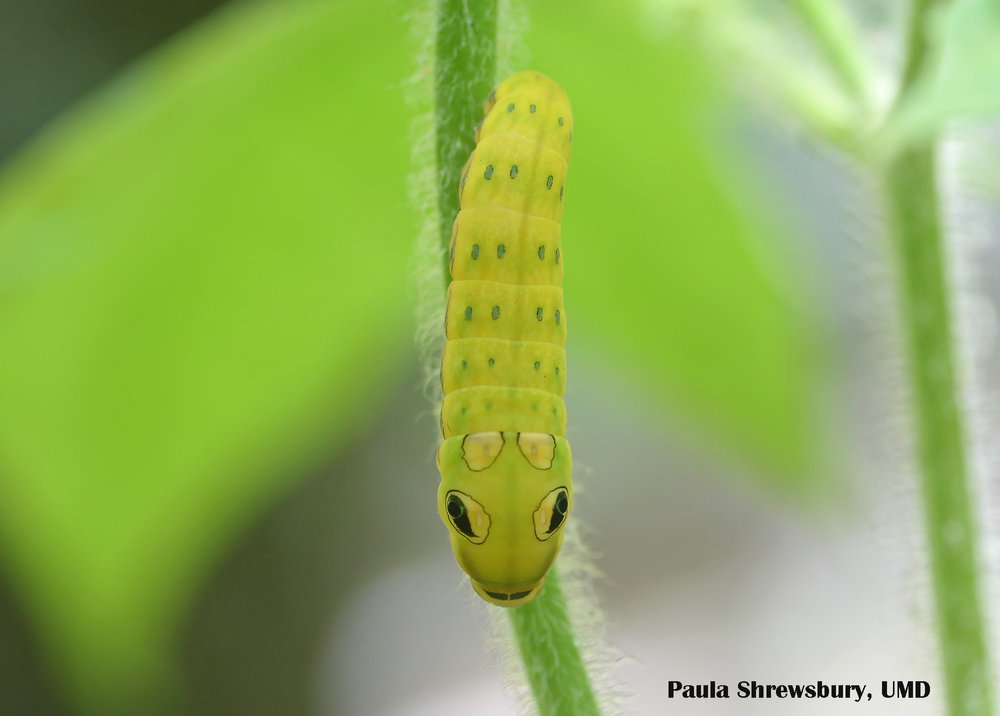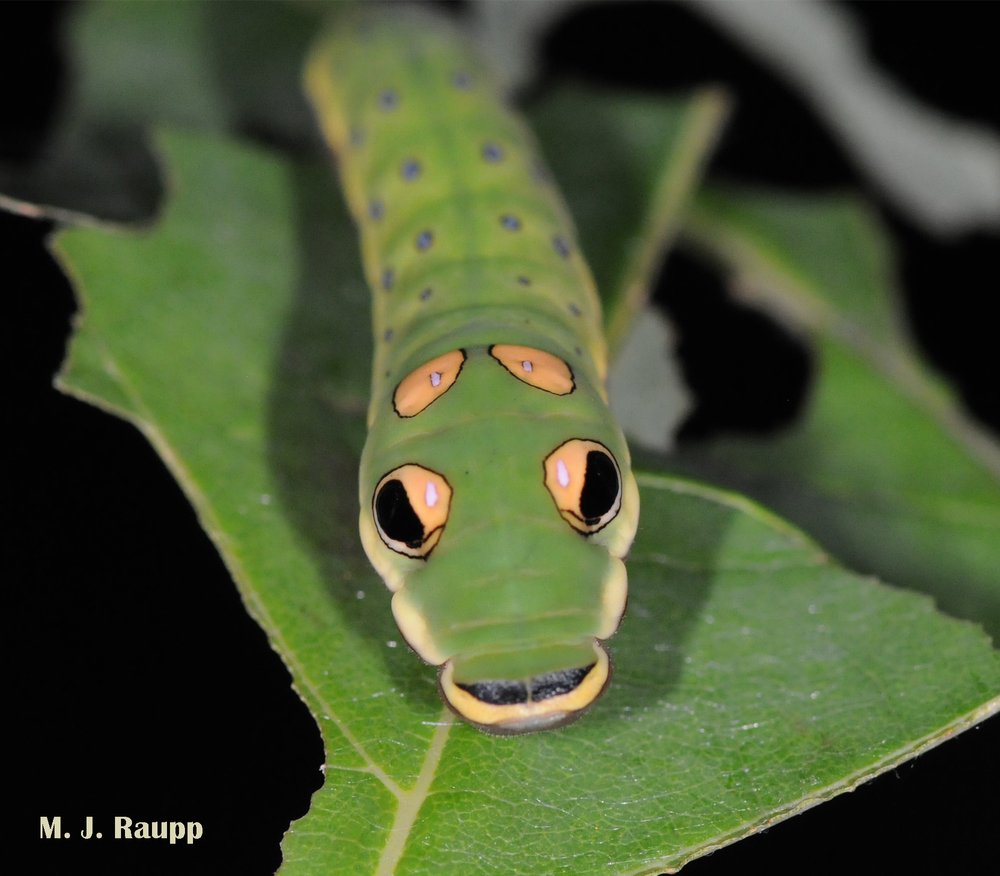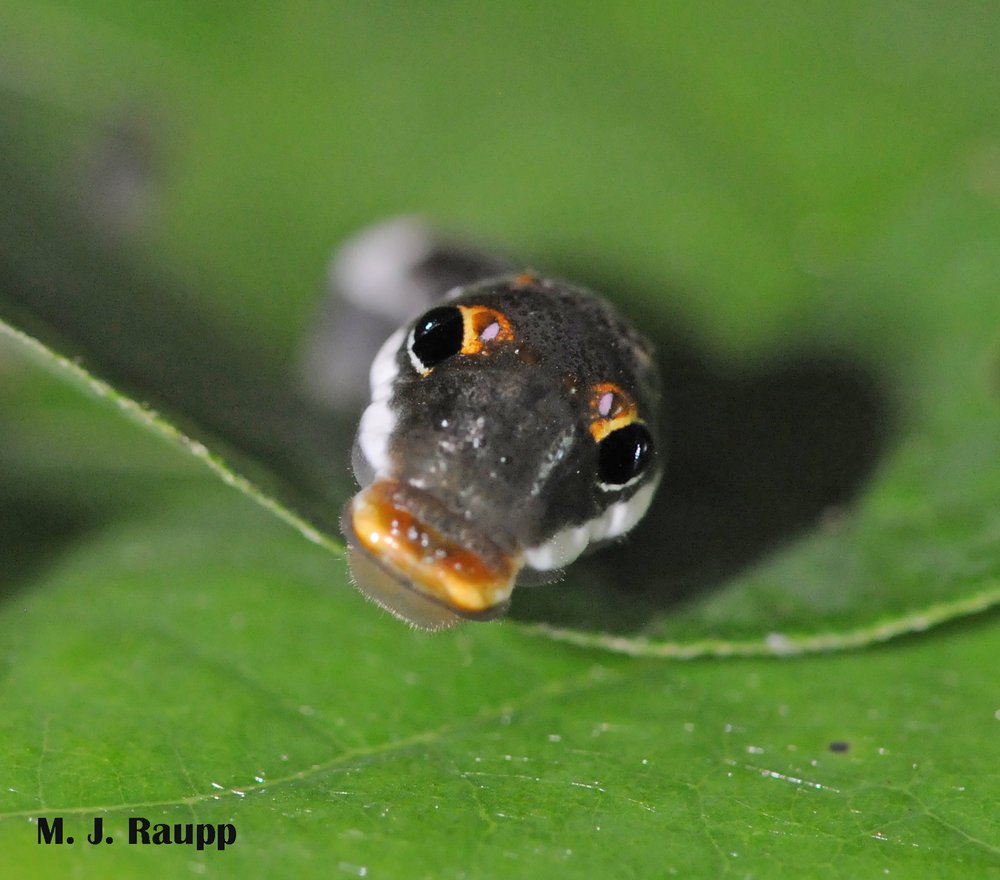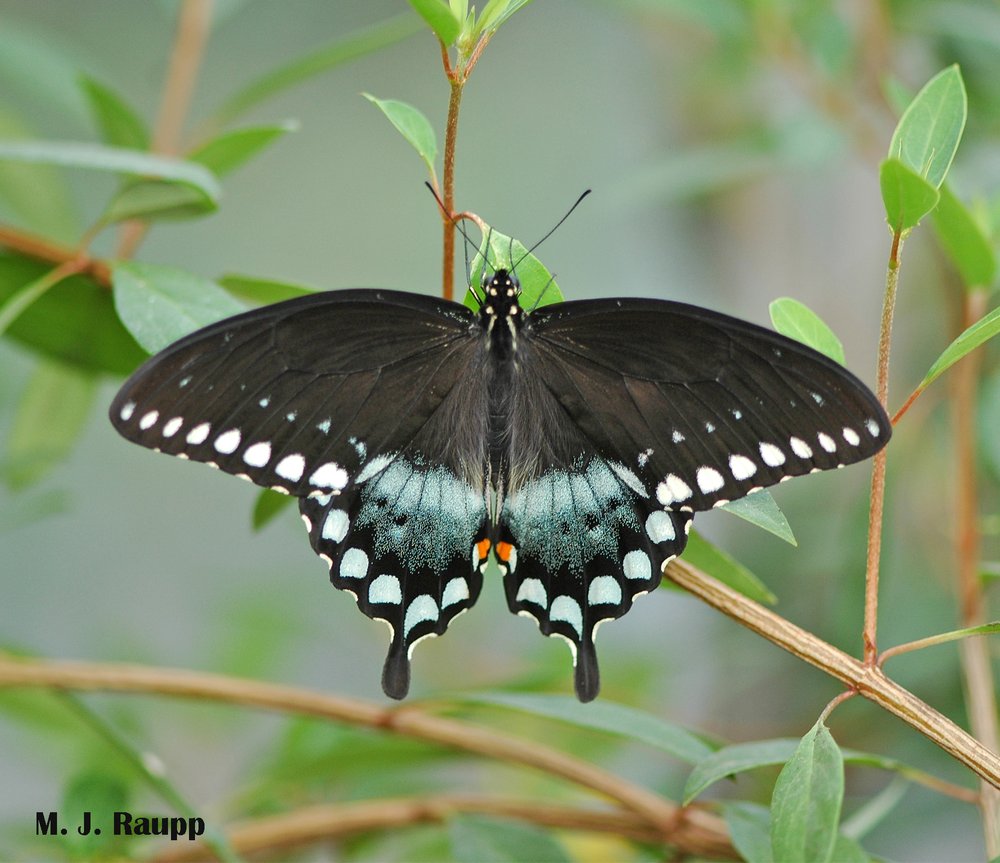
Small snake resting on a stem? Nope, spicebush swallowtail caterpillar. Image credit: P. M. Shrewsbury, PhD

Visit Natural Bridge State Park in Virginia to experience spectacular scenery and fascinating wildlife.
A real geological treasure can be found at Natural Bridge State Park just off of Route 81 near Lexington, VA. Here Cedar Creek wends its way beneath a spectacular dolomitic arch formed when ancient subterranean streams of acidic water dissolved surrounding limestone and created an underground karst cave. Through hundreds of millennia, the cave collapsed and erosion exposed the magnificent arch. While enjoying a hike along gorgeous Cedar Creek, a fellow hiker asked if we had seen the strange yellow snake in a small shrub just a short piece down the river. Never wanting to miss a chance to see a snake, we backtracked to an impressive native herbaceous plant known as small flowered leafcup (Polymnia canadensis). There we discovered what, at first glance, appeared to be a stumpy, banana - yellow snake with large googly eyes meandering along the plant’s stem. Masquerading as a serpent, false eyespots on the body of this trickster have evolved to deceive vertebrate predators like birds. The logic behind this ruse goes something like this. What eats a caterpillar? Birds do. And what eats a bird? Snakes do. So, if you are a caterpillar, looking like a snake might just help scare away a hungry bird, right? Clearly, the “I am a snake not a caterpillar” trick worked well on a human and perhaps this works just as well on other vertebrate predators.

Large snake-like eyespots on the body might give a hungry bird second thoughts about attacking this caterpillar.
I usually meet and enjoy spicebush swallowtail caterpillars on spicebush or sassafras trees. Several years ago, I rescued a small spicebush from a construction site and planted it in my back yard. In addition to wonderfully aromatic foliage, spicebush bears gorgeous red berries in autumn that are a favorite with birds. While attracting birds is delightful in its own right, this interesting native plant attracts the magnificent spicebush swallowtail, which uses spicebush as food for its young. After a few years of disappointment, I was rewarded with the appearance of three tiny swallowtail caterpillars hiding in neatly folded leaves. By clipping small notches in the foliage, the first instar larvae bend leaves over to create a tiny refuge. After passing through an ugly duckling phase resembling bird droppings as first instars, caterpillars molt and initiate their art of deception and visual surprises.
With two large, glistening eyespots, at first glance a spicebush swallowtail caterpillar looks like a snake. This clever ruse may help it escape predation by birds and other predators. Young caterpillars build shelters to avoid detection by clipping and folding leaves. They too have false eyespots and their bodies resemble bird droppings. Yuck! Older caterpillars sport eyespots on an emerald green background which may turn banana-yellow before they form a chrysalis and emerge as adults. This trickster fooled a human and is thought to fool other predators as well.

With the body of a bird dropping and the head of a serpent, this young caterpillar presents a confusing visage to a would-be predator.
After its first molt, the spicebush caterpillar glistens and its dark brown coloration with brilliant white stripes announces that it is nothing more than a bird dropping. While a dung eating fly might find this attractive, it is unlikely that any self-respecting bird would entertain a bird dropping as a meal. The small spice bush larva has one more bit of visual trickery just in case a nosy predator takes a closer look. When viewed head-on, two beady false eyespots on the thorax and two dashed white lines along the sides create the creepy visage of a viper. As the caterpillar molts and grows, the serpent theme is repeated and enhanced with large vacuous eyespots set in a matrix of serpent green. The last stage of the caterpillar may turn yellow and move from the spicebush or sassafras to form a chrysalis on vegetation nearby before molting to the adult stage.

The beautiful spicebush butterfly is thought to mimic the distasteful pipevine swallowtail.
If the art of deception fails to fool a predator, the spice bush caterpillar has one more trick up its sleeve. Just behind its head the caterpillar houses a specialized structure called the osmeterium. Usually, this forked orange appendage is tucked beneath the skin out of sight. When the caterpillar is threatened, it extends the osmeterium in the direction of the attacker. This glandular organ is coated with foul smelling chemicals reminiscent of rancid butter. The disturbing visual and olfactory display might be the final deterrent to hungry predators wanting to dine on this beautiful caterpillar. Deception does not end when the spice bush caterpillar transforms to the adult butterfly. Dark colored wings splashed with patches and lines of orange and white are thought to mimic the coloration of the nasty tasting pipevine swallowtail, Battus philenor. A trickster as a youth and a trickster as an adult help the spice bush swallowtail to live another day.
Acknowledgements
Thomas Eisner’s delightful book “For Love of Insects” and David Wagner’s wonderful guide “Caterpillars of Eastern North America” were used as references for this episode. Several other insects including owl, promethea, and Io moths use false eyespots to confuse predators.
No comments:
Post a Comment